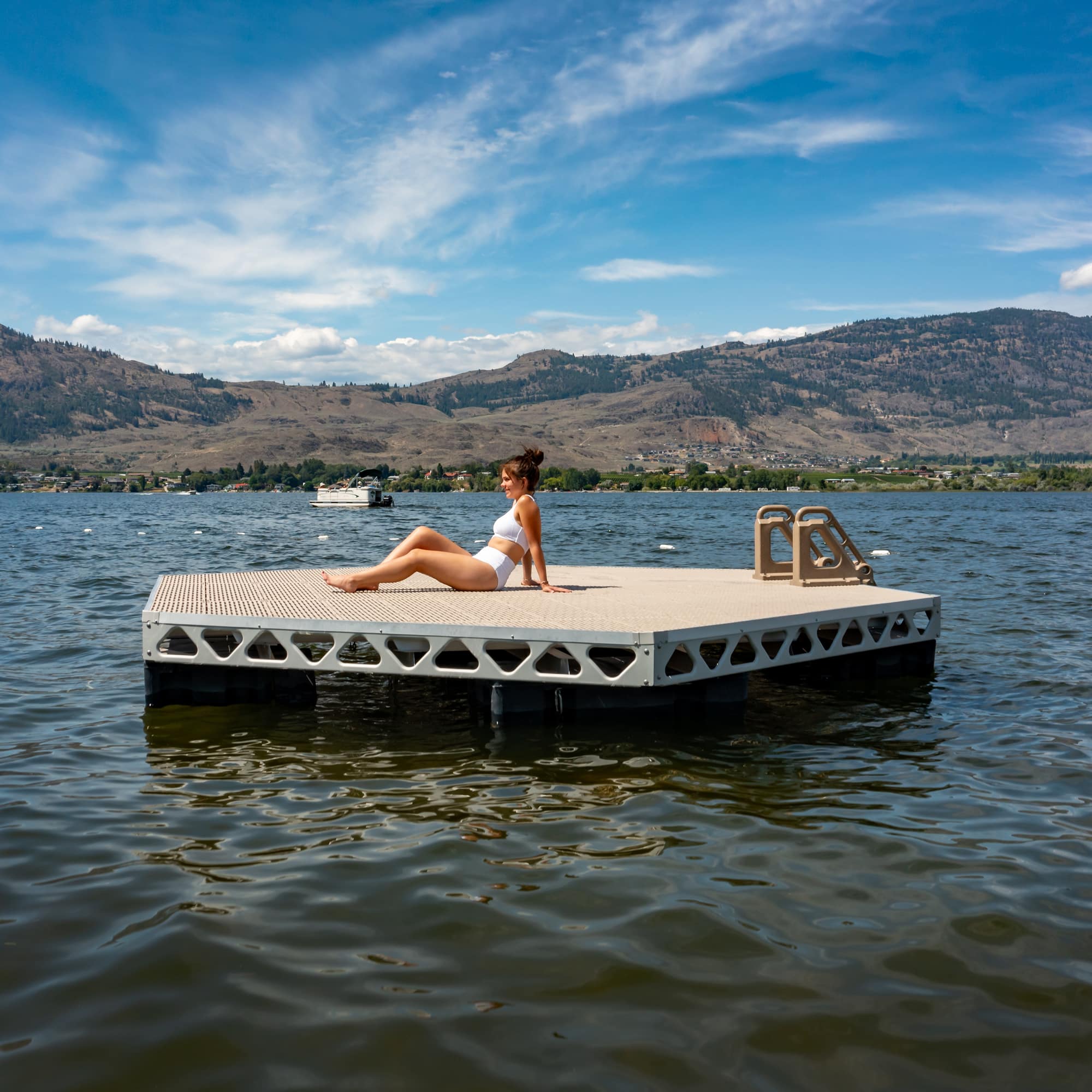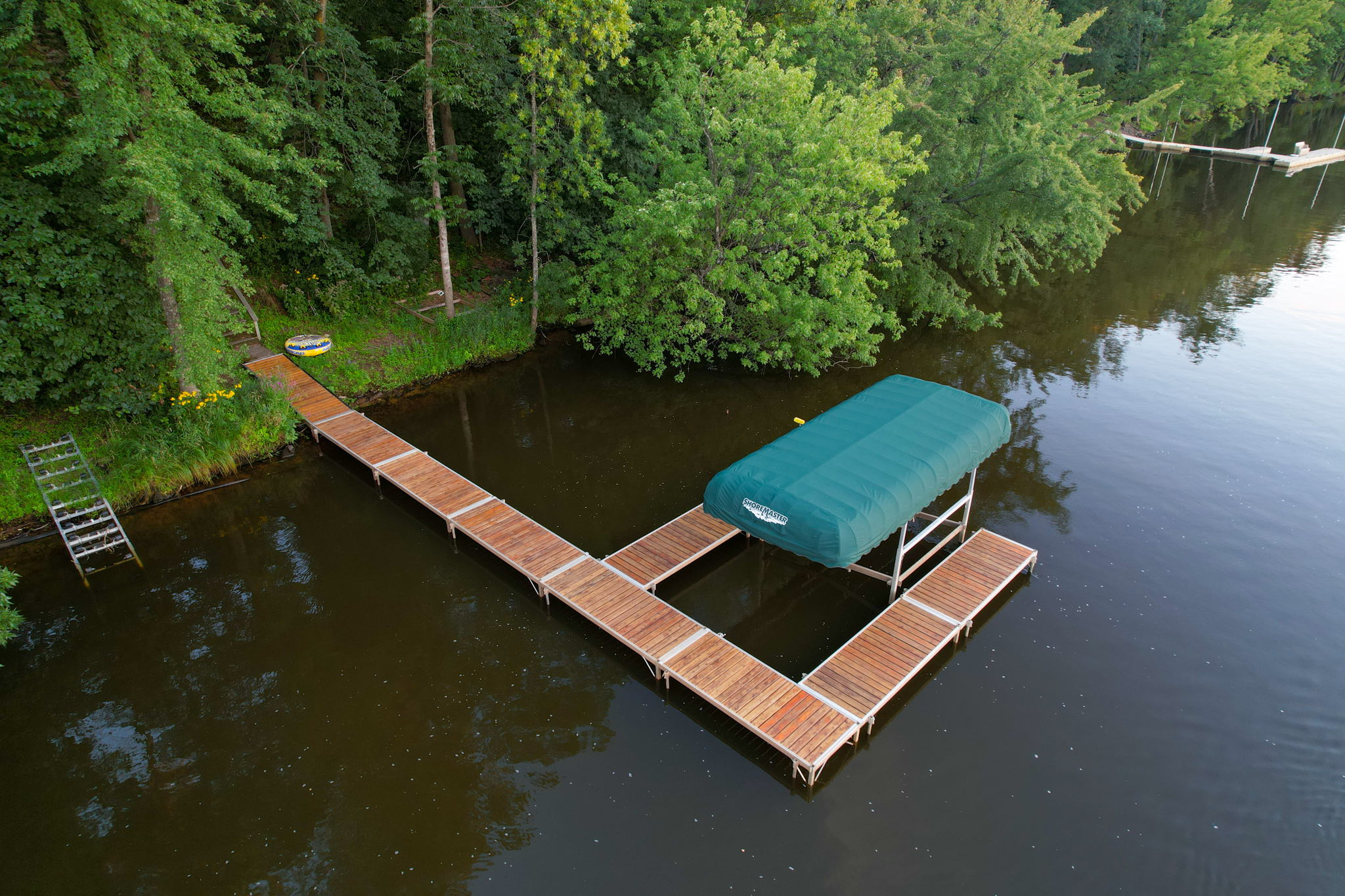Navigating the Options: Choosing the Right Dock Company for Your Floating Dock Project
Navigating the Options: Choosing the Right Dock Company for Your Floating Dock Project
Blog Article
Produce the Perfect Docking Service With Floating Docks
Floating docks existing a functional solution for a range of maritime demands, adapting seamlessly to changing water degrees and diverse vessel types. As we explore the important components that contribute to the efficiency of floating docks, several key elements relating to security and upkeep will certainly arise, increasing inquiries regarding how to maximize your docking experience.

Advantages of Floating Docks
Floating docks offer countless benefits that make them a perfect option for different maritime applications. Among the main advantages is their versatility to altering water levels. Unlike taken care of docks, floating docks rise and loss with the trend, making certain regular access for vessels. This attribute is specifically crucial in locations susceptible to considerable tidal fluctuations or seasonal water level adjustments.
In addition, floating docks are typically easier and quicker to set up contrasted to standard fixed frameworks. Their modular layout permits uncomplicated assembly and disassembly, promoting upkeep and relocation when essential. This versatility is especially advantageous for momentary applications or in environments where problems may change.
Floating docks also often tend to be much more eco-friendly, as they decrease interruption to the seabed and surrounding water communities. Their buoyant nature minimizes the risk of damages to aquatic life, promoting a much healthier environment. These docks can be tailored to fit numerous vessel dimensions, ensuring that they satisfy details functional demands.
Eventually, the mix of flexibility, simplicity of installation, and environmental factors to consider makes floating docks an extremely reliable solution for a vast array of maritime demands.
Picking the Right Products
Picking the proper products for floating docks is critical to make sure longevity, stability, and sturdiness. The option of materials straight influences the dock's efficiency in numerous environmental problems, consisting of direct exposure to water, sunshine, and prospective wear from aquatic web traffic.
Typical products made use of for floating docks consist of light weight aluminum, wood, and high-density polyethylene (HDPE) Light weight aluminum is light-weight, corrosion-resistant, and needs very little maintenance, making it an outstanding option for durability. Its initial cost can be higher contrasted to other products.
Timber, while visually attractive and supplying a traditional appearance, can be at risk to rot and pest damages otherwise appropriately treated. Using pressure-treated timber or naturally sturdy varieties like cedar or redwood can minimize these problems.
HDPE is a popular selection because of its resistance to UV rays and chemicals, in addition to being eco-friendly. floating dock services. It is available and light-weight in numerous shades, enabling for customization
Inevitably, the best material option will rely on particular demands, including spending plan, preferred visual appeals, and ecological factors to consider. Cautious assessment of these variables will certainly result in a resilient and successful floating dock remedy.
Style Factors To Consider for Security
When creating floating docks, making sure stability is a basic aspect that can substantially influence their capability and security. Security in floating dock design is affected by numerous elements, including buoyancy, weight circulation, and the setup of components. An optimal buoyancy system ought to use products that give sufficient lift while reducing weight. This equilibrium makes certain that the dock continues to be above water, even under varying loads.
Weight distribution is important; equally dispersing loads throughout the dock prevents turning and boosts security. Broader styles can use boosted security, particularly in harsh water problems, while longer docks might need additional assistances to stop sagging.
An additional crucial consideration is the ecological influence, consisting of wave action and wind. Including functions such as sidewalls or skirting can aid alleviate the effects of ecological forces, keeping stability in damaging conditions. Inevitably, a combination of thoughtful layout, material option, and understanding of environmental aspects will produce a floating dock that satisfies both security and safety needs.
Installation Tips and Methods

Next, secure the required permits and abide by neighborhood laws, which might determine setup methods and environmental factors to consider. If needed, engage a qualified contractor experienced in floating dock setups. Use high-quality products created for marine atmospheres to improve resilience and longevity.
When placing the dock, align it parallel to the coastline to assist in easy accessibility. Make sure that the anchoring system is robust, click resources utilizing cinder block or helical anchors to maintain the dock against wind and wave activity. It's vital to account for seasonal water degree changes, consisting of prospective ice movement in chillier climates.
During the installation, verify the dock's floatation and stability prior to finalizing the anchoring. Consistently examine the installment for any type of indicators of wear or damages. By adhering to these strategies and tips, you can attain a protected, functional, and visually pleasing floating dock setup that fulfills your requirements.
Maintenance and Treatment Standards
Keeping and caring for floating docks is vital to lengthening their lifespan and guaranteeing risk-free use. Normal inspections should be carried out to determine any type of indicators of wear, damages, or aquatic development. Seek cracks, loose installations, or discolored areas on the dock's surface, as these issues can compromise structural integrity.
Cleaning is vital. Utilize a pressure washer to remove algae, barnacles, and visit this site right here debris, which can build up in time. For stubborn growth, take into consideration eco-friendly cleaning representatives that will not damage marine life.
Additionally, check the mooring lines and anchors frequently to ensure they are secure and totally free from rust. Replace any kind of torn or harmed lines without delay to preserve stability.
Throughout extreme weather, such as tornados or freezing problems, take precautionary measures. Safeguard the dock with added mooring lines and, if practical, remove any removable elements to avoid damage.
Verdict
Finally, the implementation of floating docks presents a efficient and functional docking remedy appropriate for various maritime applications. Their flexibility to changing water levels, incorporated with a modular style, enables simple customization and moving. Choosing proper materials boosts both longevity and aesthetic appeal, while cautious factor to consider of stability ensures safety and security and longevity. With correct setup and normal maintenance, floating docks can offer dependable and reliable docking experiences for site link a broad variety of vessels.
As we explore the important components that contribute to the performance of floating docks, several essential variables regarding stability and maintenance will arise, elevating inquiries about how to enhance your docking experience. Unlike dealt with docks, floating docks surge and fall with the tide, guaranteeing constant availability for vessels.When making floating docks, making certain security is a basic aspect that can considerably impact their performance and security. Security in floating dock style is influenced by different aspects, consisting of buoyancy, weight distribution, and the plan of parts. Inevitably, a mix of thoughtful design, material choice, and understanding of environmental elements will generate a drifting dock that fulfills both security and safety and security requirements.
Report this page